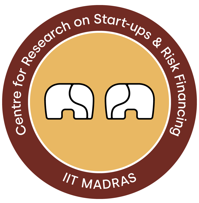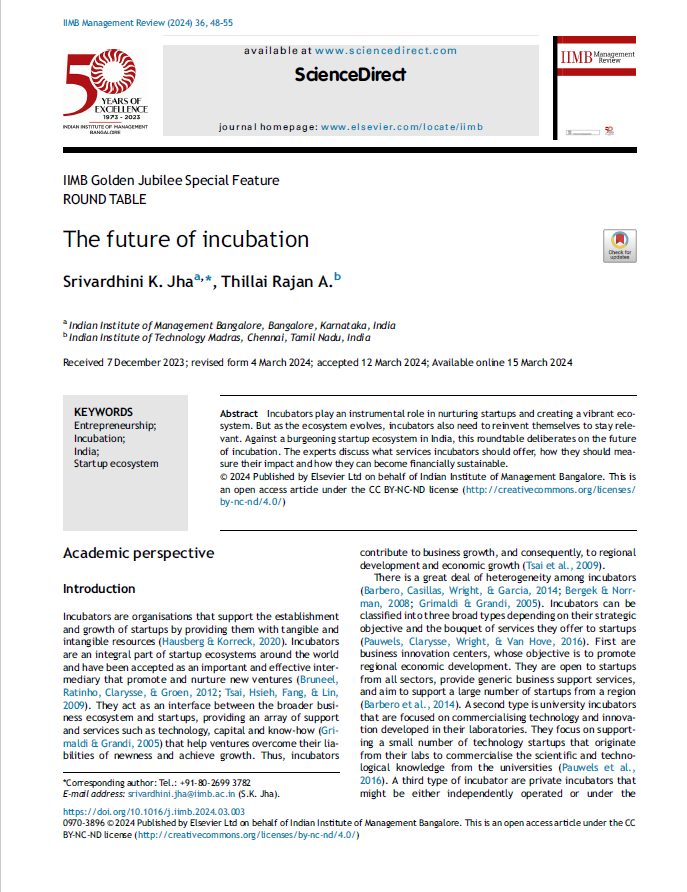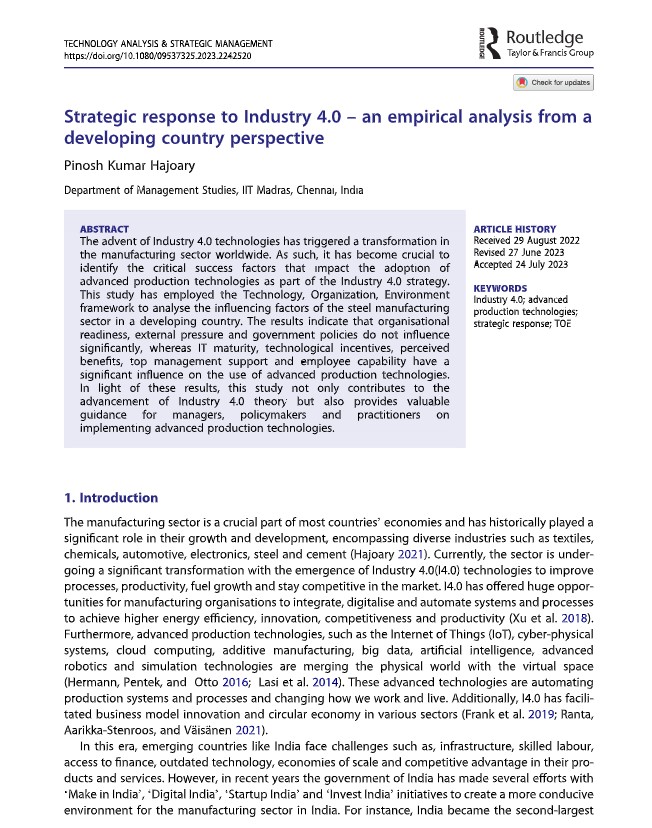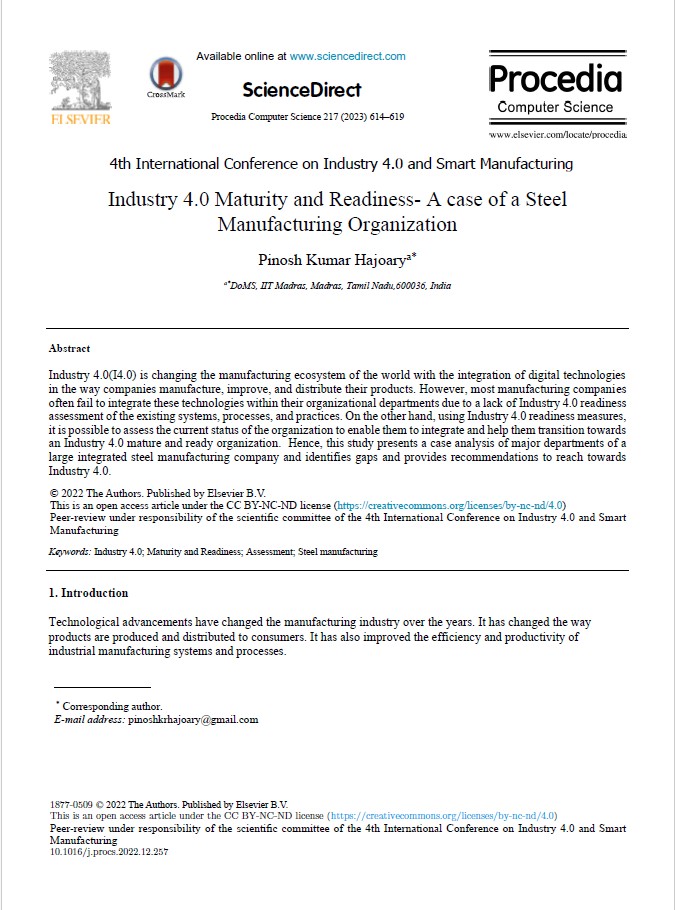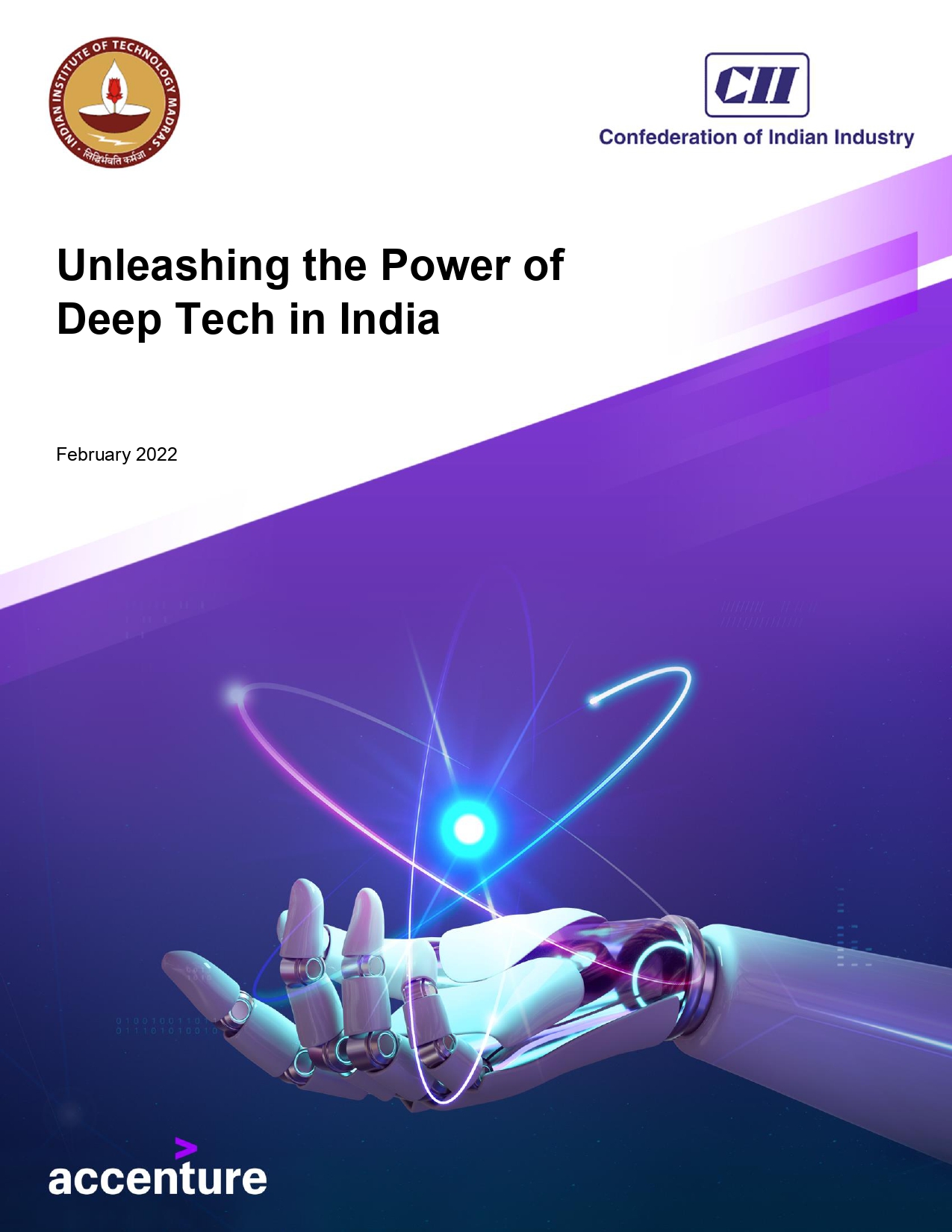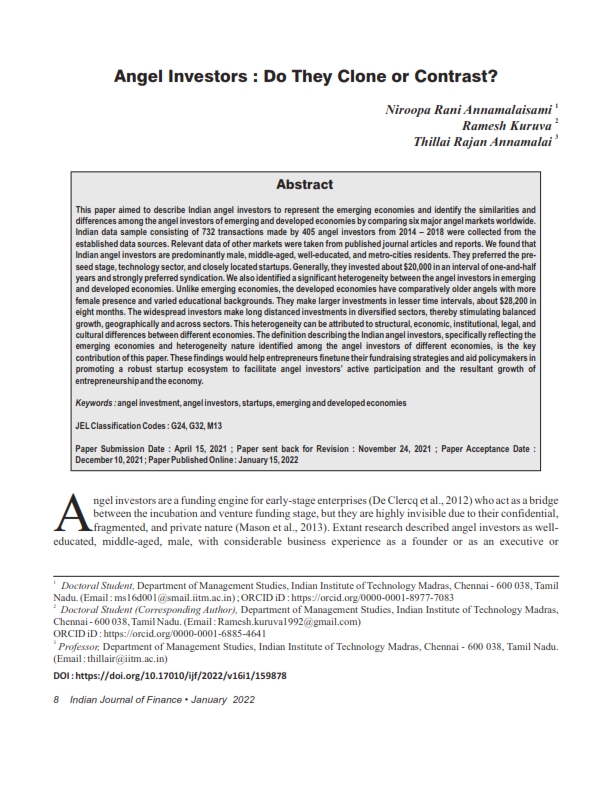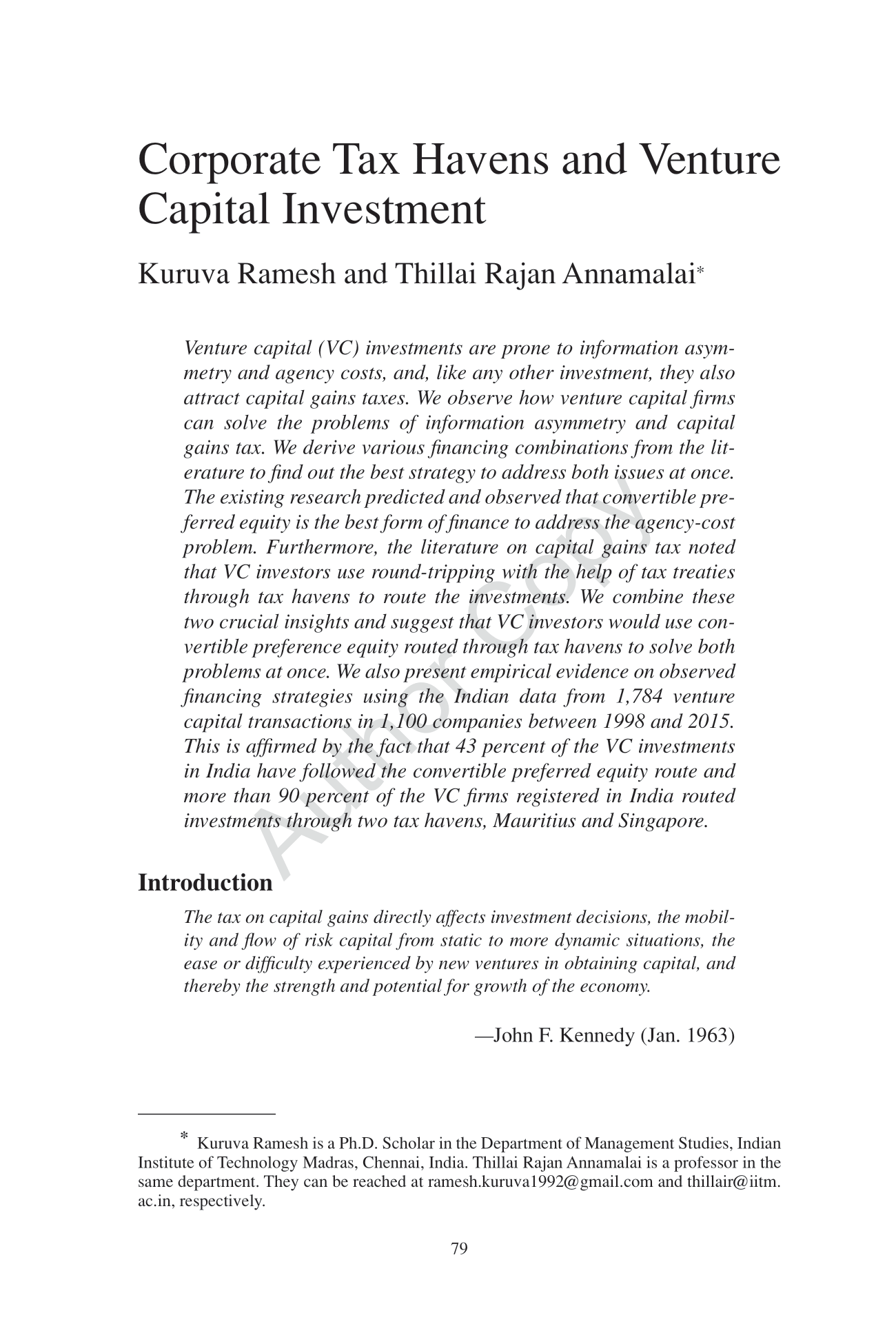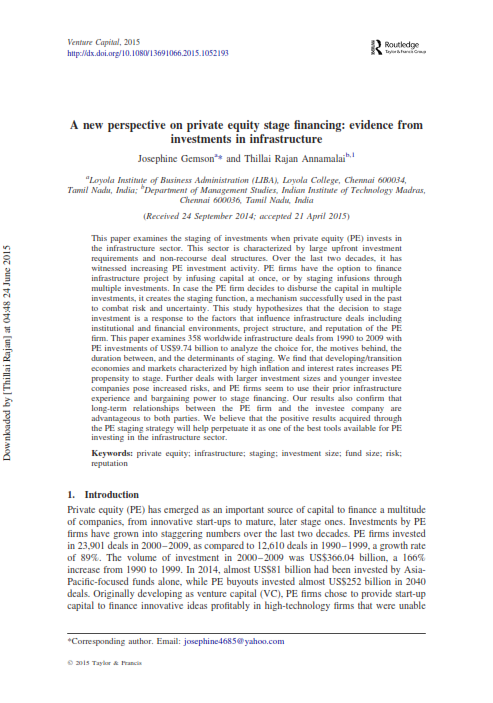Journal Publications
Journal Publications
Recent publications
Effect of mandatory sustainability performance disclosures on firm value: Evidence from listed European firms." Corporate Social Responsibility and Environmental Management
Abstract
Corporate Sustainability Performance (CSP) reporting is becoming increasingly important to investors who seek to identify and invest in companies that are managing their Environmental, Social and Governance (ESG) risks effectively. The European Union's Non-Financial Reporting Directive (NFRD), which was implemented in 2017, mandates that certain large companies must disclose their sustainability performance. This study examines the impact of the EU NFRD on the firm value of listed European firms using a difference-in-differences regression model. We find that the mandatory disclosure of corporate sustainability performance does not significantly affect firm value at an aggregate level. However, the results suggest minor inter-industry differences, which can be attributed to varying sustainability performance metrics across industries. These findings contribute not only to the nascent literature on mandatory sustainability disclosures but also to the deliberations of policymakers and regulators across the world who are devising and implementing mandatory corporate sustainability performance disclosure regulations.
Srivardhini K. Jha, Thillai Rajan A. "The future of incubation." IIMB Management Review 36, no. 1 (2024): 48-55.
Abstract
Incubators play an instrumental role in nurturing startups and creating a vibrant ecosystem. But as the ecosystem evolves, incubators also need to reinvent themselves to stay relevant. Against a burgeoning startup ecosystem in India, this roundtable deliberates on the future of incubation. The experts discuss what services incubators should offer, how they should measure their impact and how they can become financially sustainable.
Strategic response to Industry 4.0 – an empirical analysis from a developing country perspective
Abstract
The advent of Industry 4.0 technologies has triggered a transformation in the manufacturing sector worldwide. As such, it has become crucial to identify the critical success factors that impact the adoption of advanced production technologies as part of the Industry 4.0 strategy. This study has employed the Technology, Organization, Environment framework to analyse the influencing factors of the steel manufacturing sector in a developing country. The results indicate that organisational readiness, external pressure and government policies do not influence significantly, whereas IT maturity, technological incentives, perceived benefits, top management support and employee capability have a significant influence on the use of advanced production technologies. In light of these results, this study not only contributes to the advancement of Industry 4.0 theory but also provides valuable guidance for managers, policymakers and practitioners on implementing advanced production technologies.
Industry 4.0 maturity assessment: a multi-dimensional indicator approach
Abstract
Purpose– Industry 4.0 has offered significant potential for manufacturing firms to alter and rethink their business models, production processes, strategies and objectives. Manufacturing organizations have recently undergone substantial transformation due to Industry 4.0 technologies. Hence, to successfully deploy and embedIndustry 4.0 technologies in their organizational operations and practices, businesses must assess their adoption readiness. For this purpose, a multi-dimensional analytical indicator methodology has been developed to measure Industry 4.0 maturity and preparedness. Design/methodology/approach– A weighted average method was adopted to assess the Industry 4.0 readiness using a case study from a steel manufacturing organization. Findings–TheresultrevealedthatthefirmranksbetweenIndustry2.0andIndustry3.0,withanoverallscore of 2.32. This means that the organization is yet to achieve Industry 4.0 mature and ready organization. Practical implications– The multi-dimensional indicator framework proposed can be used by managers, policymakers, practitioners and researchers to assess the current status of organizations in terms of Industry 4.0 maturity and readiness as well as undertake a practical diagnosis and prognosis of systems and processes for its future adoption. Originality/value– Although research on Industry 4.0 maturity models has grown exponentially in recent years, this study is the first to develop a multi-dimensional analytical indicator to measure Industry 4.0 maturity and readiness.
Industry 4.0 Maturity and Readiness- A case of a Steel Manufacturing Organization
Abstract
Industry 4.0(I4.0) is changing the manufacturing ecosystem of the world with the integration of digital technologies in the way companies manufacture, improve, and distribute their products. However, most manufacturing companies often fail to integrate these technologies within their organizational departments due to a lack of Industry 4.0 readiness assessment of the existing systems, processes, and practices. On the other hand, using Industry 4.0 readiness measures, it is possible to assess the current status of the organization to enable them to integrate and help them transition towards an Industry 4.0 mature and ready organization. Hence, this study presents a case analysis of major departments of a large integrated steel manufacturing company and identifies gaps and provides recommendations to reach towards Industry 4.0.
Guest Editor, "Journal of Indian Business Research", Thillai Rajan A., Priya Nair Rajeev
Abstract
Since the time the Prime Minister of India, Narendra Modi, coined the popular “Start-up India, Stand-up India” slogan in his Independence Day address on 15 August 2015 (Business Standard, 2015), there has been a significant policy impetus to encourage start-ups and develop a supportive ecosystem for start-ups and innovation in India. The supportive stance of the national government has also influenced the various state governments to enact similar policies. The accommodative policy environment along with a convergence of various factors has resulted in India emerging as the World’s third-largest start-up ecosystem (InvestIndia, 2022). Underlining this was the declaration made by the Prime Minister of India to mark 16 January as the National Start-up Day to percolate the start-up culture at the grassroots level (The Hindu, 2022). A recent publication (Thillai Rajan et al., 2021) provides a comprehensive overview of the evolution of the Indian start-up ecosystem.
White Paper on "Unleashing the Power of Deep Tech in India", February 2022
Abstract
Deep Tech is a collection of advanced technologies aimed at solving the most complex challenges in the world around us. VC funding in Deep Tech companies in 2021 stood at 133 investments worth over $1.4 billion, up from 106 deals worth $556 billion in 2020. India has seen 43 new tech start-ups clocking a valuation of more than $1 billion, and 270 Deep Tech start-ups raise funding in 2021. Post-pandemic rapid digitalization, security concerns and industrial automation has further promoted the adoption and integration of Artificial Intelligence, Machine Learning, Internet of Things, Augmented Reality, Virtual Reality, Block chain Technologies and so on, which have been the major contributors for deep tech growth in India. This White Paper highlights the challenges faced by Indian Deep Tech start-ups and the ways to deal with those challenges based on international experiences. The White Paper also includes key ideas from a Round Table on Commercialization of Deep Tech and a case study on the IIT Madras Deep Tech ecosystem.
Guest Editor, Special Issue on “Start-ups, Innovation and Venturing,” Journal of Indian Business Research, Vol. 14:1, 2022. Guest Editorial: 14(1): 1-3, 2022. DOI: 10.1108/JIBR-03-2022-365
Abstract
Since the time the Prime Minister of India, Narendra Modi, coined the popular “Start-up India, Stand-up India” slogan in his Independence Day address on 15 August 2015 (Business Standard, 2015), there has been a significant policy impetus to encourage start-ups and develop a supportive ecosystem for start-ups and innovation in India. The supportive stance of the national government has also influenced the various state governments to enact similar policies. The accommodative policy environment along with a convergence of various factors has resulted in India emerging as the World’s third-largest start-up ecosystem (InvestIndia, 2022). Underlining this was the declaration made by the Prime Minister of India to mark 16 January as the National Start-up Day to percolate the start-up culture at the grassroots level (The Hindu, 2022). A recent publication (Thillai Rajan et al., 2021) provides a comprehensive overview of the evolution of the Indian start-up ecosystem. In tandem, the rapid growth in the number of start-ups and investment flow has garnered the interest of research scholars and academia. From setting up purely action and implementation-oriented centres such as incubators and innovation labs, the Indian universities have also started to focus on academic research and knowledge creation in the areas of start-ups and venture capital. The Centre for Research on Start-ups and Risk Financing (CREST) set up at the Indian Institute of Technology Madras is an example. The growing interest on academic research in this area has also led to the formation of a Pan India academic consortium, namely, the innovation, venturing and entrepreneurship in India network (iVEIN). This special issue on “Start-ups, Innovation and Venturing” is, therefore, not only relevant but also timely.
Rani, Niroopa, Kuruva Ramesh, and Thillai Rajan Annamalai (2021):. Angel Investors: Do They Clone or Contrast? Indian Journal of Finance 16(January): 8–26. https://doi.org/10.17010/ijf/2022/v16i1/159878
Abstract
The aim of this study is to analyse and compare the nature, behaviour and investment preferences of angel investors around the world. In order to get a better understanding of the emerging economies, a special emphasis was given on the Indian Angel market. Angel investors' detailed characterization and their investment preferences identified in this paper would help entrepreneurs fine-tune their fundraising strategies. Furthermore, this paper highlighted some key differences in angel investment trajectories in different economies. The transparent and mature angel markets encourage angel investors from diverse age groups, gender and educational backgrounds to participate actively. And the scattered angel investors in developed economies making diversified investments stimulate start-ups' balanced growth, both geographically and across all sectors. The findings show that there is significant heterogeneity among angel investors in emerging and developed economies that can be attributed to structural, economic, institutional, legal, and cultural differences between different economies. These findings would help policymakers promote a balanced and robust start-up ecosystem that facilitates angel investors' active participation and the resulting magnificent growth of entrepreneurship and economy.
Denila Jinny Arulraj and Thillai Rajan Annamalai (2020), Firms’ Financing Choices and Firm Productivity: Evidence from an Emerging Economy, International Journal of Global Business and Competitiveness, 15: 35–48. DOI: https://doi.org/10.1007/s42943-020-00008-2
Abstract
Emerging economies can compete in the global markets only through productivity improvements. Most firms in developing economies are inefficient, making misallocation of resources highly likely. Finance is not only a factor of production but also a facilitator of other factors of production. When finance is misallocated, the aggregate productivity and firm competitiveness deteriorate. Formal financial intermediaries are expected to mitigate misallocation through efficient screening. Small firms, that form most of the firms in developing economies, often do not have enough information to facilitate efficient screening. Under these circumstances, are formal lenders able to allocate capital efficiently? What are the factors that determine access to finance and firm productivity? Does access to finance improve firm productivity? This study attempted to answer these questions by analysing Indian small firms. In the first stage of the analysis, Data Envelopment Analysis was used to estimate relative efficiency, which was used in a simultaneous equations model in the second stage. The results indicated that despite the lenders preferring highly efficient firms, external finance was detrimental to productivity. The interest of the formal lender is in the quick and safe repayment of the loan whereas the return on productivity improvements can only be realised in the long-term. It is argued that this mismatch causes formal finance to hamper the productivity of funded firms. Without facilitating productivity improvements, external finance cannot provide sustainable growth and firms cannot compete in the global markets. Consequently, the country may never graduate to the next stage of economic development.
Kuruva Ramesh and Thillai Rajan Annamalai (2020): Corporate Tax Havens and Venture Capital Investment, Journal of Taxation of Investments, 37 (3), Spring Issue: 79 – 91
Abstract
Venture capital (VC) investments are prone to information asymmetry and agency costs, and, like any other investment, they also attract capital gains taxes. We observe how venture capital firms can solve the problems of information asymmetry and capital gains tax. We derive various financing combinations from the literature to find out the best strategy to address both issues at once. The existing research predicted and observed that convertible preferred equity is the best form of finance to address the agency-cost problem. Furthermore, the literature on capital gains tax noted that VC investors use round-tripping with the help of tax treaties through tax havens to route the investments. We combine these two crucial insights and suggest that VC investors would use convertible preference equity routed through tax havens to solve both problems at once. We also present empirical evidence on observed financing strategies using the Indian data from 1,784 venture capital transactions in 1,100 companies between 1998 and 2015. This is affirmed by the fact that 43 percent of the VC investments in India have followed the convertible preferred equity route and more than 90 percent of the VC firms registered in India routed investments through two tax havens, Mauritius and Singapore.
Josephine Gemson and A. Thillai Rajan (2017). A Choice between Staging and Syndication as Tools to Control Risks When Private Equity Invests in Infrastructure, Journal of Structured Finance, Summer Issue, 1-17.
Abstract
To mitigate the risks faced by private investors, including private equity (PE), strategies such as staging and syndication have been successfully employed. In this article, the determinants and preference of these two alliance-based strategies are explored when PE invests in infrastructure. Known for large capital outlays, project-finance structures, and nonrecourse financing, infrastructure is not a conventional choice for PE but has received enormous PE investment in recent years. Worldwide deals from 1990–2009 in energy, transport, and water and utilities sectors are analyzed in a nonrecursive path model to examine how environment, information, and investment risk determines the probability and preference of these strategies. Results indicate that the experience level of PE, especially in infrastructure, prior infrastructure experience, and proximity to the project determine the choice between staging and syndication, with staging emerging as the preferred alternative.
A. Thillai Rajan and Vikram Kapur (2017). The role of Ventures in Strengthening the Fabric of the City: The case of Chennai. Coller Venture Review, Issue 5: 18-28
Abstract
In the last few years, India has become the leader among the emerging nations in venture investments and start-up activity. In terms of number of start-ups founded, India ranks among the top three countries globally after the U.S. and the U.K. , India’s largest start-up funding platform, showed that about 75 percent of the start-ups registered in their platform were from the six Tier 1 cities. Founding of ventures is thus inextricably associated with the six large cities of India, which have more conducive ecosystems for setting up of ventures. Chennai has a thriving entrepreneurial culture, the nature of start-ups or ventures that emerge is qualitatively different because of the ecosystem. In this article, we highlight the role of ventures in strengthening the economic and social fabric of a city, using Chennai as a case study. The discussion will be based on the following sectors that Chennai is known for: automobiles, healthcare, the movie and music industry, and software and information technology. Five boxes provide a background to these sectors. To highlight the social contribution of ventures, we also focus on the role of ventures in augmenting the services provided by various civic service agencies
Josephine Gemson and A. Thillai Rajan (2015). A new perspective on private equity stage financing: evidence from investments in infrastructure, Venture Capital – An International Journal of Entrepreneurial Finance, 17(4): 299-325. DOI: http://dx.doi.org/10.1080/13691066.2015.1052193
Abstract
This paper examines the staging of investments when private equity (PE) invests in the infrastructure sector. This sector is characterized by large upfront investment requirements and non-recourse deal structures. Over the last two decades, it has witnessed increasing PE investment activity. PE firms have the option to finance infrastructure project by infusing capital at once, or by staging infusions through multiple investments. In case the PE firm decides to disburse the capital in multiple investments, it creates the staging function, a mechanism successfully used in the past to combat risk and uncertainty. This study hypothesizes that the decision to stage investment is a response to the factors that influence infrastructure deals including institutional and financial environments, project structure, and reputation of the PE firm. This paper examines 358 worldwide infrastructure deals from 1990 to 2009 with PE investments of US$9.74 billion to analyze the choice for, the motives behind, the duration between, and the determinants of staging. We find that developing/transition economies and markets characterized by high inflation and interest rates increases PE propensity to stage. Further deals with larger investment sizes and younger investee companies pose increased risks, and PE firms seem to use their prior infrastructure experience and bargaining power to stage financing. Our results also confirm that long-term relationships between the PE firm and the investee company are advantageous to both parties. We believe that the positive results acquired through the PE staging strategy will help perpetuate it as one of the best tools available for PE investing in the infrastructure sector.
